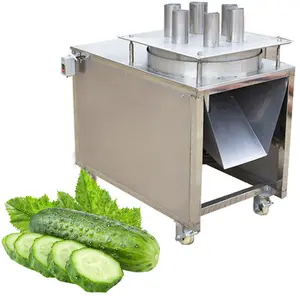Popular in your industry
































Top categories
About cutting mango
Mango is a tropical fruit known for its sweet and tangy flavor. It is a versatile fruit that can be enjoyed in various ways, including raw, in smoothies, salads, and desserts. However, before enjoying a mango, it is important to know how to cut a mango properly to avoid any waste and ensure a pleasant eating experience. The steps to slice a mango are simple and straightforward, and with a few tips, anyone can quickly and efficiently chop a mango into bite-sized pieces.
How to cut a mango the right way?
The first step in cutting a mango fruit is to wash the fruit under running water to remove any dirt or residue from the skin. Using a clean cutting board and knife, place the mango on its side and locate the stem. The mango's pit is flat and large, so the goal is to cut around the pit to get two large mango "cheeks." Start by making a vertical cut about a quarter-inch away from the centerline to avoid the pit. Repeat the same process on the other side to get two mango "cheeks." The remaining fruit surrounding the pit can also be used by carefully cutting off the flesh. Once the mango cheeks are obtained, make a grid-like pattern of cuts into the flesh of each cheek, being careful not to cut through the skin. The knife should cut down to the skin but not through it. After making the cuts, invert the mango cheek by pushing the skin side up, causing the mango cubes to pop out. The cubes can be further separated from the skin.
How to use a mango slicer?
A mango slicer is a specialized kitchen tool designed to cut through the mango fruit, separating the flesh from the pit and skin. To use a mango slicer, start by washing the mango under running water. Hold the mango firmly in one hand and orient it vertically with the stem facing up. With the other hand, align the mango slicer's blade with the center of the mango. Apply moderate pressure and push the slicer straight down through the mango until it reaches the bottom. The slicer's sharp edges will cut through the fruit, separating it into three parts: two mango "cheeks" and the center pit. Carefully remove the mango slicer from the fruit. To separate the mango flesh from the skin, use a spoon to scoop out the flesh from each cheek. The mango slices or cubes can be further cut as desired. Mango slicers are convenient tools for quickly and easily cutting mangoes, making them a popular choice for those who enjoy this tropical fruit.
How to pick a mango?
Choosing a ripe mango is crucial for its taste and texture. When selecting a mango, it is important to consider the fruit's color, firmness, and aroma. The color of a ripe mango varies depending on the variety, but it should have a bright and vibrant appearance. Avoid mangoes with large blemishes, bruises, or wrinkled skin, as these may indicate overripeness or damage. To assess firmness, gently squeeze the mango. A ripe mango should give slightly under pressure, similar to a ripe peach. However, if it is too soft, it may be overripe. The aroma of a ripe mango is often described as sweet and fragrant, indicating that the fruit is ready to eat. However, the lack of a strong smell does not necessarily mean the mango is not ripe. When choosing a mango, it is also important to consider the intended use. A slightly firmer mango is suitable for slicing and dicing in salads or salsas, while a softer mango is ideal for eating fresh or blending into smoothies. By considering color, firmness, and aroma, it is easier to pick a mango that is ripe and ready to enjoy.






























